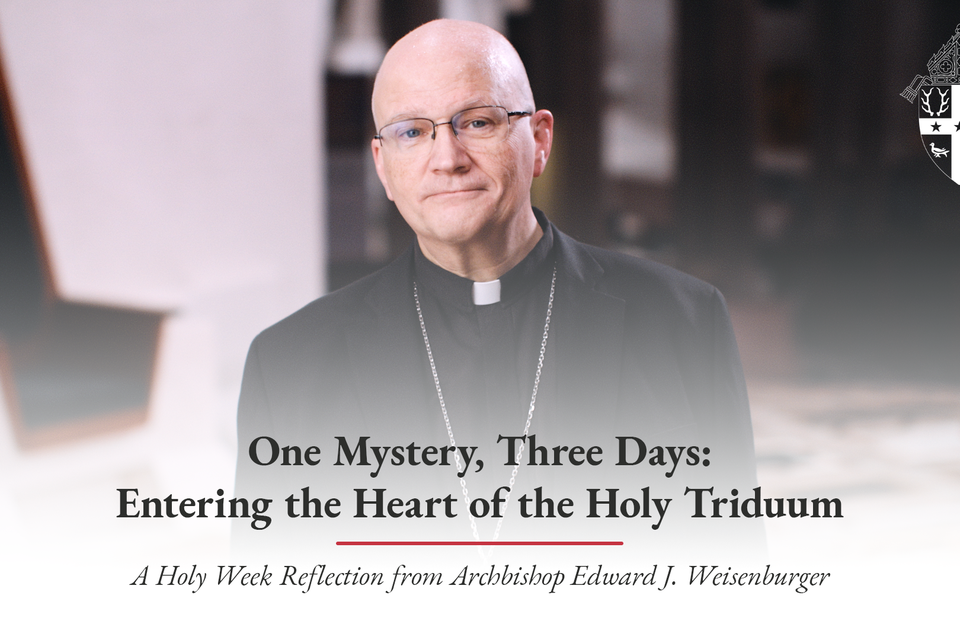READERS’ NOTE: Father Jean-Baptiste Marie Vianney began his priestly career by just barely passing his final seminary examinations. He was eventually assigned to the hamlet of Ars. Read the first part of this two-part column series here.
Beauty in the service of God
Informing Abbe Vianney of his mission to Ars, the vicar general said, “There is not much love of God there — you will instill some into it." In 1818, the village consisted of 40 houses. Along with its wretched presbytery, a dilapidated church originally dedicated to St. Sixtus sat on a knoll. The new abbe visited every household. Enjoying his strolls through the fields, he got to know his parishioners by chatting and praying with them.
The young priest had an excellent sense of beauty. His church was the place where the Divine Sacrifice of Love was re-presented. Abbe Vianney wanted it as beautiful as possible. With his own money he bought a new altar. He then painted the church’s woodwork himself. But the vestments were in tatters; the vessels needed replacing.
The goldsmiths and embroiderers of Lyons must have been astonished at the sight of the young country parson in a shabby, black soutane, wearing a battered, old tricorn. He seemed to have not a sou to his name yet he ordered the most exquisite articles. Only the best was good enough for the service of God. Pilgrims wonder at the delicacy of design given the chalice, ciborium and monstrance. The vestments, now in glass cases, are regarded with equal reverence.
Abbe Vianney felt just as strongly about education. He opened a free boarding school called "Providence." From 1827, he took in none but destitute girls to provide them a way of making a living and avoid more sordid aspects of the world. He felt it his greatest achievement.
Confessor to the world
The confessions began. Father Vianney’s advice was compelling. Spiritual life, the beauty of Catholic teaching, the priest explained, was about living to love a bountiful Father, not appeasing a vengeful deity.
The abbe was bound by the seal of the confessional, but not so those who sought sanctifying grace. Penitents told how the abbe mentioned sins they had forgotten, or were afraid to confess, explaining why they fell into Satan’s traps and how to avoid the pitfalls. Word of Abbe Vianney’s gentle solicitude and miraculous knowledge spread. People from all parts of France descended on Ars.
A priest from a neighboring parish, envious of Abbe Vianney’s growing fame, started a petition to have him transferred, citing his dismal record in seminary. Brought to his attention, Father Vianney happily signed the petition. He even posted it to the bishop, which must have given His Excellency a hearty laugh. The petition died on his desk.
Within a few years, Catholics from all Europe traveled to Ars. Eventually, pilgrims from all over the world arrived to confess, receive absolution and hear sound advice from the abbe, as many as 20,000 per year. The priest found himself in the confessional for 16 to 18 hours every day.
As it was, Father Vianney cared little about himself. Over time, people noticed his soutane becoming threadbare and gave him money for new clothing. The good priest always found someone needing the money more. So they quietly bought new clothes and threw out the old.
With the growing number of pilgrims, in 1823, the bishop gave Ars ranking as its own parish. Abbe Vianney asked to leave, thinking himself unworthy to be a curé, French for “pastor.” The bishop wouldn’t hear of it. Obedient to authority, the priest remained to become famed as the Curé d'Ars.
Miracles and contemplative prayer
Along with their sins, pilgrims to Ars found themselves healed of long-standing maladies. The Curé credited the power of God, through the intercession of St. Philomena, a young martyr whose relics had recently been found in the Roman catacombs. The Curé formed a strong devotion to this valiant young woman who died centuries before, advising penitents to pray for her intercession and thank God with all their hearts.
Advocating contemplative prayer, especially when adoring Jesus in the Most Blessed Sacrament, Father Vianney taught parishioners not merely to recite prayers, but quietly allow the Lord’s sacramental presence to wash over them, taking to heart the scriptural advice, "Be still, and know that I am God" (Psalm 46:10).
Showing how to become absorbed in contemplating Jesus, our Eucharistic Lord, the Curé was fond of telling a story about an old farmer who came to church and sat in the last pew. He was there so long the Curé came over to ask if all was well. Indicating the Tabernacle, the farmer replied, “I look at Him. He looks at me. We get along.”
Grappin the demon
For 35 years, Father Vianney was beleaguered by a demon whom he mockingly called Grappin (“Pitchfork”). Marguerite Vianney, the Curé’s sister, told how, when visiting, she spent the night at her brother’s presbytery but was awakened by strange rappings on the wall of her room. She dressed and descended to the church. Although it was late at night, her brother was hearing confessions.
Informing him of the odd noises, Jean-Baptiste replied, “Oh, my child, you should not be frightened: It is the Grappin. He cannot hurt you. As for me, he torments me in sundry ways. At times he seizes me by the feet and drags me about the room. It is because I convert souls to the good God.”
Indeed, the demon regularly punched and kicked the priest. At times, Father Vianney was kept from sleeping, hearing taunts, harrowing voices, evil singing, or shouting. When friends asked about these phenomena, the priest shrugged them off. “Oh! the Grappin and myself? We are almost chums. He’s very cunning but not very strong. I only have to make the Sign of the Cross and he leaves.”
In the early morning of Feb. 24, 1857, the Curé’s room in the presbytery caught fire.
Abbe Alfred Monnin, the curate assigned to help (and the saint’s first biographer), rapidly put out the blaze and reported to the Curé. Having risen early, he was — where else? — hearing confessions. “The Grappin must be very angry,” he chuckled. “He couldn’t catch the bird so he burned the cage. It is a good sign. We shall save many sinners this day.”
End and beginning
In 1852, Emperor Napoleon III bestowed the Legion d'honneur on the pastor of Ars. The Curé was disappointed to learn that the decoration did not come with money he might disperse among the poor. Handing back France’s highest award to the priest selected to present it, the Curé told him, "Take it, my friend. And may you have as much pleasure in receiving it as I have in giving it to you."
July 29, 1859, was the last day on which the Curé appeared in his church. He entered his confessional about 1 a.m., but felt compelled to rest at 11. The illness progressed rapidly.
On Aug. 2, he received Holy Viaticum, exclaiming, "How good God is! When we can no longer go to Him, He comes to us." In the early morning of Aug. 4, a thunderstorm burst over Ars. As Abbe Monnin read the words of Commendation, “May the holy angels of God come to meet him and conduct him into the heavenly Jerusalem,” the Curé of Ars went home to God.
Years later, a small basilica seating 200 people was built in Ars, but Pope St. Pius X forbade destruction of the church the Curé knew, where his body now rests in a glass coffin. In preparation for Pope St. John Paul II’s 1986 visitation, an underground chapel was built, seating 400.
In 1874, Jean-Baptiste-Marie Vianney was proclaimed Venerable by Blessed Pope Pius IX. In 1905, he was enrolled among the blessed by St. Pius X, who extolled him as a model to the parochial clergy.
On Pentecost, May 31, 1925, a Jubilee Year, Pius XI solemnly intoned, "We declare Jean Baptiste Marie Vianney to be a Saint and inscribe him in the canon of the Saints." In 1929 Pius named him patron of the world’s parish priests.
On the centenary of his death, 1959, St. John XXIII’s encyclical, "Nostri Sacerdotii Primitias," presented the Curé of Ars as a model of priestly life and pastoral zeal.
St. John Paul II made St. John Vianney the subject of his annual Holy Thursday letter to all priests in 1986.
The Year of the Priest, June 2009 to June 2010, was devoted to St. John Vianney. At the year’s concluding Mass, Pope Benedict XVI named the Curé d'Ars patron of all priests.
Sean M. Wright, MA, is an Emmy nominated television writer, a Master Catechist for the Archdiocese of Los Angeles, and is a member of the RCIA team at Our Lady of Perpetual Help parish in Santa Clarita, California. He responds to comments sent to [email protected].











